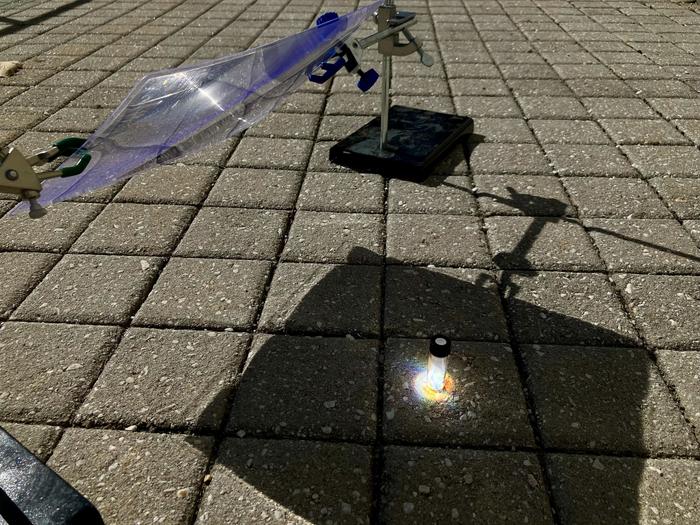
Black foam and black coffee lids, which are often made of polystyrene, usually end up in landfills because colour additives lead to ineffective sorting. Now, a US group has shown that the use of an additive in black plastics can allow sunlight or white LEDs to break down black and colored polystyrene waste into reusable materials. The study appears in the American Chemical Society publication ACS Central Science.
“Simple, visible light irradiation holds the potential to transform the chemical recycling of plastics, using the additives already found in many commercial products,” say the paper’s authors, Sewon Oh, Hanning Jiang and Erin Stache.
An emerging strategy for plastic recycling involves using light to help break down plastic into chemically useful materials that can be recycled into new products. This process requires a helper compound to convert light into the heat needed to break apart polymer bonds. However, finding the right helper that won’t create more waste and is easily incorporated into recycled materials remains a challenge for researchers. Seeking to create a circular economy for plastic recycling, Stache and a team of researchers took advantage of something already found in black polystyrene waste — an additive known as carbon black.
The researchers tested a method to recycle lab-made black polystyrene: They ground a mixture of polystyrene and carbon black to a fine powder, placed the powder in a sealed glass vial and then set the vial under high-intensity white LEDs for 30 minutes. The carbon black converted the LED light into heat. The heat then broke apart the polystyrene’s molecular structure, creating a mixture of shorter one-, two- and three-styrene units. And these three components cleanly separated within the reaction apparatus. In experiments, the team recycled the leftover carbon black and styrene monomer into polystyrene, demonstrating the circularity of the new method.
Applying the technique to post-consumer black plastic from food containers and coffee cup lids, the researchers cut the waste into small pieces and found that up to 53% of the polystyrene converted to styrene monomer. Waste samples contaminated with canola oil, soy sauce and orange juice broke down slightly less efficiently. When the researchers switched the light source from LEDs to focused sunlight outdoors, they observed a higher reaction efficiency (80%). Additionally, a multicolored mixture of black, yellow, red and colorless polystyrene waste converted to styrene in sunlit conditions at a higher rate (67%) compared to white LEDs (45%). The researchers attribute the higher efficiencies to the greater light intensity achieved by focused sunlight. By demonstrating sunlight’s ability to break down colored polystyrene waste, the researchers say that their method could create a closed-loop recycling process for this type of plastic.
The authors acknowledge funding from Cornell University and Princeton University as well as a Catalysis Science Early Career award from the US Department of Energy.




